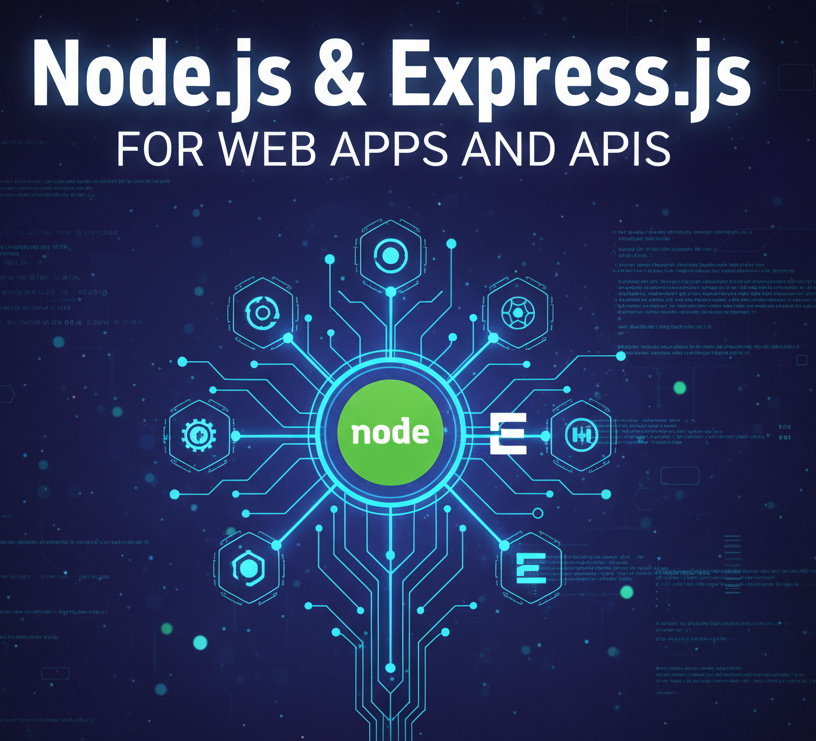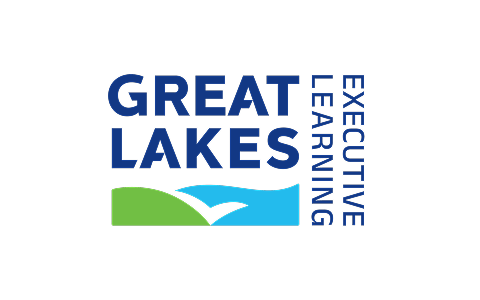- Great Learning
- Free Courses
- Digital Marketing
Free SEO Course with Certificate
SEO for Beginners
Learn the basics of SEO, search engine optimization, and content optimization to increase organic traffic and visibility of the site. This Free SEO Course with certificate will help you develop a solid search marketing background.
Instructor:
Mr. Vishal PadghanSEO for Beginners
128.5K+ learners enrolled so far
Stand out with an industry-recognized certificate
10,000+ certificates claimed, get yours today!
Get noticed by top recruiters
Share on professional channels
Globally recognised
Land your dream job

Skills you will gain
Digital Marketing Basics
SEO Fundamentals
On-Page SEO
Off-Page SEO
Backlinking Strategies
Keyword Research
Keyword Analysis
SEO Tools (Ahrefs)
Keyword Explorer
Keyword Difficulty Analysis
Search Volume Analysis
Keyword Idea Generation
+8 More
Key Highlights
Get free course content
Master in-demand skills & tools
Test your skills with quizzes
About this course
This free SEO for Beginners course is the perfect starting point to learn how Search Engine Optimization works and why it matters for building an online presence. You will learn the fundamentals of SEO, learn the various types, and take simple steps to increase visibility in search results.
You will also develop useful skills such as how to find the right keywords, optimize content and how search engines crawl, index, and rank web pages. By the end, you are not only knowledgeable about the methods of SEO but also have a certification that proves you have mastered them. To go a bit deeper, take a look at our PG Digital Marketing Course.
Course outline
What is Digital Marketing?
In this module, you will understand the definition of digital marketing, how it has evolved, and why it is essential in this digital era.
Why Digital Marketing?
In this module, you will understand why Digital Marketing has come into the picture and why it is becoming so popular. Get familiar with the history of the evolution of Digital Marketing and what has changed its use.
Types of Digital Marketing
Digital Marketing has quite a few types that include Content Marketing, SEO & SEM, PC, Affiliate Marketing, and a lot more. In this module, you will briefly be introduced to these types of Digital Marketing.
What is SEO?
SEO is the practice of increasing the quality of organic traffic. In this module, you will understand the meaning of SEO, and how SEO is important in bringing organic traffic to your website.
Why SEO?
This module on “WhySEO?" will help you to understand the importance of SEO such as competitors' research, Keyword analysis, and link-building process for your website/business growth.
Types of SEO
In this module, you will come across the different aspects of SEO, such as On-Page, Off-Page, and Technical SEO. You will also learn how and why these aspects of SEO are important in bringing up your online presence.
Demo - SEO for Google
This demo class will cover the essential Google SEO terms that help in the growth of your website.
Demo - SEO for YouTube
This demo class will cover the essential Youtube SEO terms that help in the growth of your business’s YouTube channel.
Get access to the complete curriculum once you enroll in the course
Stand out with an industry-recognized certificate
10,000+ certificates claimed, get yours today!
Get noticed by top recruiters
Share on professional channels
Globally recognised
Land your dream job

SEO for Beginners

1.5 Hours
Beginner
128.5K+ learners enrolled so far
Get free course content
Master in-demand skills & tools
Test your skills with quizzes
Refer and earn
Get learning discounts up to $20
Level up with advanced skills & become job ready with Pro+
Subscribe to Pro+ today to build skills with 50+ Pro courses and prep for jobs with advanced AI tools.
 (1).jpg)
Mastering Digital Marketing

Practice exercises

Guided Projects

AI Resume Builder

AI mock interviews
Get course + certificate with Pro+ subscription
Learner reviews of the Free Courses

5.0
5.0

5.0
5.0
5.0
4.0
5.0
5.0
5.0
5.0
Our course instructor

Mr. Vishal Padghan
Digital Marketing Expert
Frequently Asked Questions
Will I receive a certificate upon completing this free course?
Is this course free?
What is SEO, and why is it important?
SEO, or Search Engine Optimization, is the practice of optimizing websites to rank higher in search engine results. It's important because it helps increase organic (non-paid) traffic to your website, improving visibility and potentially attracting more customers.
Who is the SEO for Beginners course designed for?
The SEO for Beginners course is designed for individuals who are new to SEO and want to learn the fundamentals of optimizing websites for search engines.
Do I need any prior knowledge or experience in SEO to enroll in this course?
No, this course is designed for beginners, and no prior knowledge of SEO is required. It starts with the basics and gradually builds your understanding.
What topics are covered in this course?
This course covers a range of topics, including keyword research, on-page SEO, off-page SEO, technical SEO, SEO tools, and best practices for optimizing websites.
Is the SEO for Beginners course a certification course?
Will I receive a certification upon completing the course?
Yes, upon completion of the course and quiz, you will receive an SEO Certificate, which can be a valuable addition to your resume.
Are there any assignments or quizzes in this course?
Yes, this course includes assignments and quizzes to help you solidify your understanding of the SEO concepts covered.
How can I apply the knowledge gained from this course to improve my website's SEO?
You can apply the knowledge gained by implementing SEO best practices on your website, conducting keyword research, optimizing content, and monitoring your site's performance using SEO tools.
Will this course cover the latest SEO trends and updates?
Yes, this course is updated regularly to reflect the latest industry trends and algorithm updates. We'll keep you on top of best practices to ensure your SEO strategy remains effective.
Will I have lifetime access to the free course?
Yes, you will have lifetime access to this free SEO course.
Become a Skilled Professional with Pro Courses
Gain work-ready skills with guided projects, top faculty and AI tools, all at an affordable price.


View Course

Included with Pro+ Subscription

View Course

Included with Pro+ Subscription
.jpg)
View Course

Included with Pro+ Subscription


View Course

Included with Pro+ Subscription


View Course

Included with Pro+ Subscription

View Course

Included with Pro+ Subscription

View Course

Included with Pro+ Subscription

View Course

Included with Pro+ Subscription




View Course

Included with Pro+ Subscription

View Course

Included with Pro+ Subscription

View Course

Included with Pro+ Subscription
.jpg)
View Course

Included with Pro+ Subscription

View Course

Included with Pro+ Subscription

View Course

Included with Pro+ Subscription


View Course

Included with Pro+ Subscription


View Course

Included with Pro+ Subscription


View Course

Included with Pro+ Subscription


View Course

Included with Pro+ Subscription


View Course

Included with Pro+ Subscription


.png)
View Course

Included with Pro+ Subscription
 (1).jpg)
View Course

Included with Pro+ Subscription

View Course

Included with Pro+ Subscription

View Course

Included with Pro+ Subscription
.png)
View Course

Included with Pro+ Subscription
.png)
View Course

Included with Pro+ Subscription
.jpg)
View Course

Included with Pro+ Subscription
.jpeg)
View Course

Included with Pro+ Subscription
.jpg)
View Course

Included with Pro+ Subscription

View Course

Included with Pro+ Subscription

View Course

Included with Pro+ Subscription

View Course

Included with Pro+ Subscription
.jpg)
View Course

Included with Pro+ Subscription
.png)
View Course

Included with Pro+ Subscription

View Course

Included with Pro+ Subscription

View Course

Included with Pro+ Subscription

View Course

Included with Pro+ Subscription


View Course

Included with Pro+ Subscription


View Course

Included with Pro+ Subscription


View Course

Included with Pro+ Subscription


View Course

Included with Pro+ Subscription
.png)
View Course

Included with Pro+ Subscription



.png)


View Course

Included with Pro+ Subscription


View Course

Included with Pro+ Subscription

View Course

Included with Pro+ Subscription

View Course

Included with Pro+ Subscription
.png)
View Course

Included with Pro+ Subscription
.png)
View Course

Included with Pro+ Subscription
.png)
View Course

Included with Pro+ Subscription

View Course

Included with Pro+ Subscription

View Course

Included with Pro+ Subscription

View Course

Included with Pro+ Subscription

View Course

Included with Pro+ Subscription


View Course

Included with Pro+ Subscription
.png)
View Course

Included with Pro+ Subscription
Popular


View Course

Included with Pro+ Subscription

View Course

Included with Pro+ Subscription
.jpg)
View Course

Included with Pro+ Subscription


View Course

Included with Pro+ Subscription


View Course

Included with Pro+ Subscription

View Course

Included with Pro+ Subscription

View Course

Included with Pro+ Subscription

View Course

Included with Pro+ Subscription
AI & Generative AI




View Course

Included with Pro+ Subscription

View Course

Included with Pro+ Subscription

View Course

Included with Pro+ Subscription
.jpg)
View Course

Included with Pro+ Subscription

View Course

Included with Pro+ Subscription

View Course

Included with Pro+ Subscription
Microsoft Courses


View Course

Included with Pro+ Subscription


View Course

Included with Pro+ Subscription


View Course

Included with Pro+ Subscription


View Course

Included with Pro+ Subscription


View Course

Included with Pro+ Subscription


Management
.png)
View Course

Included with Pro+ Subscription
 (1).jpg)
View Course

Included with Pro+ Subscription

View Course

Included with Pro+ Subscription

View Course

Included with Pro+ Subscription
.png)
View Course

Included with Pro+ Subscription
.png)
View Course

Included with Pro+ Subscription
.jpg)
View Course

Included with Pro+ Subscription
.jpeg)
View Course

Included with Pro+ Subscription
.jpg)
View Course

Included with Pro+ Subscription
.jpg)
View Course

Included with Pro+ Subscription

View Course

Included with Pro+ Subscription

View Course

Included with Pro+ Subscription
.png)
View Course

Included with Pro+ Subscription
.png)
View Course

Included with Pro+ Subscription

View Course

Included with Pro+ Subscription
.png)
View Course

Included with Pro+ Subscription
IT & Software

View Course

Included with Pro+ Subscription

View Course

Included with Pro+ Subscription

View Course

Included with Pro+ Subscription
.jpg)
View Course

Included with Pro+ Subscription
.png)
View Course

Included with Pro+ Subscription

View Course

Included with Pro+ Subscription

View Course

Included with Pro+ Subscription

View Course

Included with Pro+ Subscription


View Course

Included with Pro+ Subscription
 (1).png)
View Course

Included with Pro+ Subscription


View Course

Included with Pro+ Subscription

View Course

Included with Pro+ Subscription


View Course

Included with Pro+ Subscription

View Course

Included with Pro+ Subscription

View Course

Included with Pro+ Subscription
.png)
View Course

Included with Pro+ Subscription
.png)
View Course

Included with Pro+ Subscription

View Course

Included with Pro+ Subscription

View Course

Included with Pro+ Subscription

View Course

Included with Pro+ Subscription

View Course

Included with Pro+ Subscription

View Course

Included with Pro+ Subscription
Cloud Computing


View Course

Included with Pro+ Subscription


View Course

Included with Pro+ Subscription


View Course

Included with Pro+ Subscription
.png)
View Course

Included with Pro+ Subscription



.png)


View Course

Included with Pro+ Subscription


View Course

Included with Pro+ Subscription
.png)

View Course

Included with Pro+ Subscription
.jpg)

.jpg)

.png)

View Course

Included with Pro+ Subscription


Cyber Security

View Course

Included with Pro+ Subscription

View Course

Included with Pro+ Subscription
.png)
View Course

Included with Pro+ Subscription
.png)
View Course

Included with Pro+ Subscription
.png)
View Course

Included with Pro+ Subscription
Data Science & ML

View Course

Included with Pro+ Subscription

View Course

Included with Pro+ Subscription

View Course

Included with Pro+ Subscription

View Course

Included with Pro+ Subscription


View Course

Included with Pro+ Subscription
.png)
View Course

Included with Pro+ Subscription
Subscribe to Academy Pro+ & get exclusive features
$25/month
No credit card required

Learn from 40+ Pro courses

Access 500+ certificates for free

700+ Practice exercises & guided projects

Prep with AI mock interviews & resume builder
Recommended Free Digital Marketing courses


.jpg)
Similar courses you might like




Related Digital Marketing Courses
-
Personalized Recommendations
Placement assistance
Personalized mentorship
Detailed curriculum
Learn from world-class faculties
50% Average salary hike -


Great Lakes Executive Learning
PGP in Strategic Digital Marketing6 Months · Online · Weekend
Dedicated Career SupportKnow More
-


FOM University
Master of Business Administration (MBA)18 Months · Study in Germany
No GRE/GMAT requiredKnow More
Relevant Career Paths >
A free SEO course for beginners covers the fundamentals of search engine optimization (SEO) and the latest trends and techniques used in digital marketing. It will cover topics such as: What is Digital Marketing?; Why Digital Marketing?; Types of Digital Marketing; What is SEO?; Why SEO?; Types of SEO; and Demo on SEO for Google, Demo on SEO for YouTube.
The course will start off by explaining what digital marketing is and why it is important. It will then delve into the different types of digital marketing, such as search engine optimization, social media marketing, content marketing, and email marketing. It will also discuss the importance of SEO and how it can help a business reach a larger audience.
Finally, the course will provide a demo on SEO for Google and SEO for YouTube. This will provide an opportunity to practice what was learned in the course and get hands-on experience with SEO.
By taking a free SEO course, beginners can gain the basic skills needed to get started in digital marketing. It will provide them with the knowledge and skills necessary to optimize a website for search engines and YouTube. It will also provide an opportunity to practice what was learned in the course and get hands-on experience with SEO.











